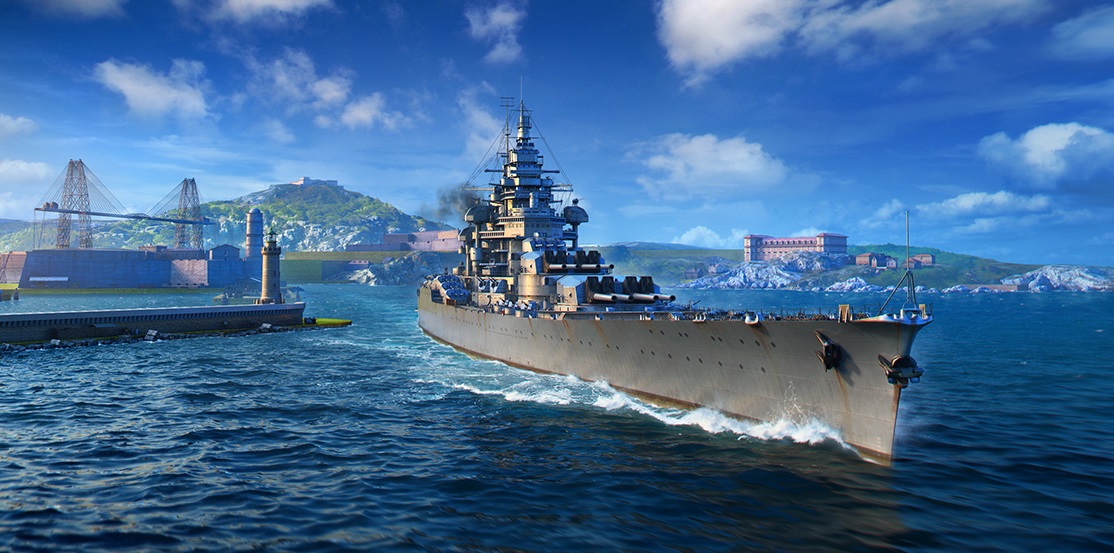


Finally, the aviation facilities had to be changed compared to the rest of the Richelieu-class and an internal hangar had to be installed at the rear of the ship like on U.S. Due to all these changes, the superstructure had to be moved forward and the main belt lengthen. This would have offered more room for the anti-air armament.

At the same time, the 152 mm secondary armament was relocated with all 3 turrets at the centerline of the ship, two forward of the superstructure and one aft. Another reason was to avoid the risk of losing the entire main battery in case of an unlucky shot that would cripple both turrets. This change in the design was made so that the ship wouldn’t have a significant blind spot at the rear. Compared to her sisterships that had an all-forward main battery, the turrets on Gascogne were split with one turret at the front of the superstructure and the other at the rear, facing towards the stern. The Gascogne, named after the region of France, was meant to be the 4th unit of the Richelieu-class battleship (even though she might as well be her own class at this point). To summarize it, Champagne is a Frankenstein monster made-in Wargaming and I will have to cover the 2 different elements (technically even 3) they took to put the ship together.įirstly, when it comes to the hull, the Champagne is using the hull of the Gascogne. Is she worth it? Is her firepower strong enough to compensate for having only 6 guns? I will give you my opinion about it. They credited us the ship so it’s time for the final judgment. With the help of historians, engineers, architects and senior officers and thanks to ultra-realistic 3D CGI, each episode drills down into the heart of the superstructures that fought them, uncovering their complex engineering and technological feats.Ladies and Gentlemen, Wargaming officially declared Champagne as finalized and ready for review. Coproduced in close collaboration with the famous video game World of Warships, this series immerses us in the greatest naval battles of the 20th century. Unfortunately, these Clashes of Titans were rarely filmed, and the wrecks of some of these defeated giants now lie at the bottom of the ocean. In the 20th century, the oceans became strategic battlegrounds and the world’s major powers built increasingly powerful warships.


 0 kommentar(er)
0 kommentar(er)
